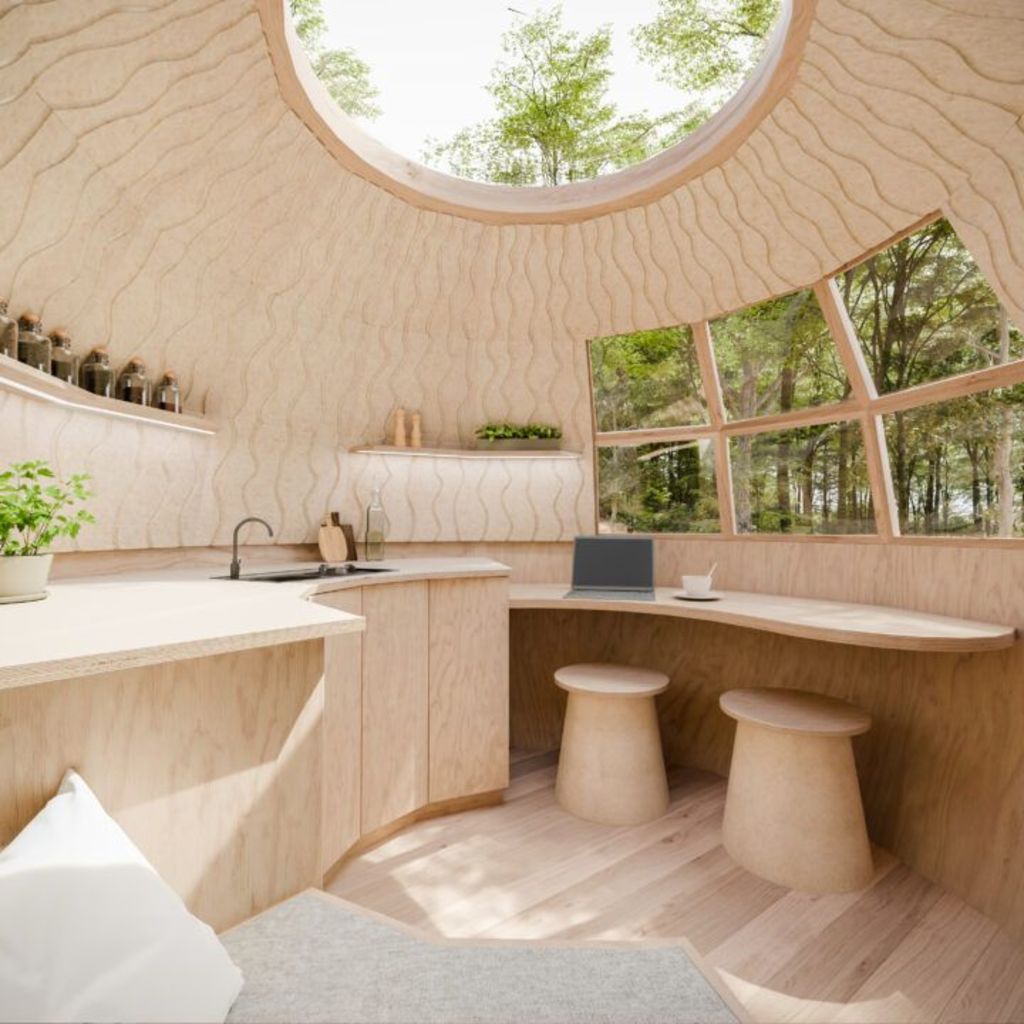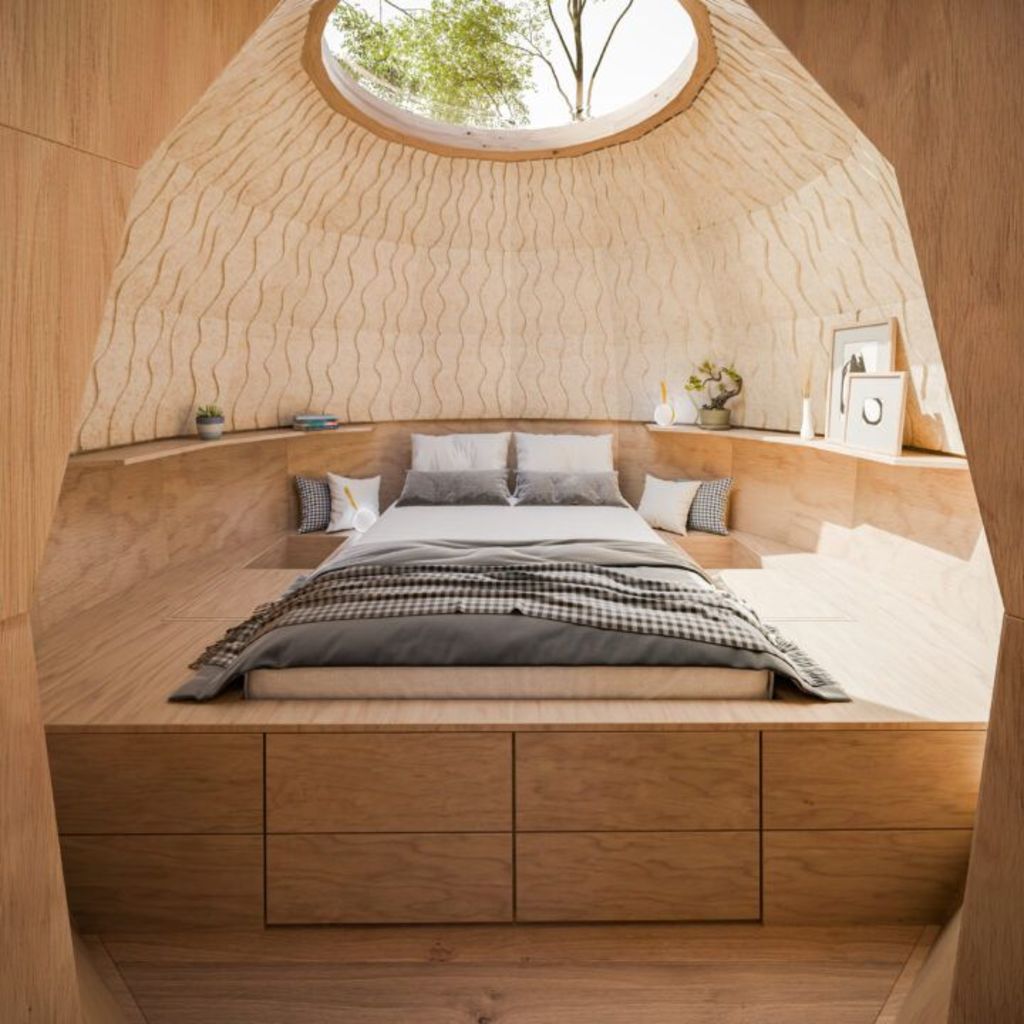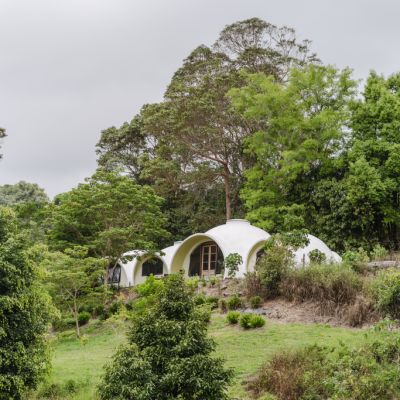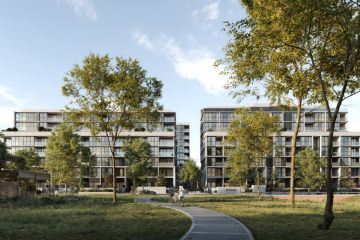Why houses made of mushrooms might slowly sprout across the world

They’re often associated with fairies, and even viewed by some cultures as a portal to another dimension.
But could the humble mushroom be a magic component of our own houses of the future?
Recently, a prototype cottage dubbed the world’s first “mushroom house” debuted in the Czech Republic, with mycelium – the root structure of fungi – forming one of its core components.

The organic material also captured imaginations in the New York Botanical Garden last year, when a quirky pavilion featuring bricks made with mycelium popped up in an exhibition exploring the fantastical world of Alice’s Adventures in Wonderland.
Mycelium is also set to lift off as astronauts attempt to grow mushrooms in space for the first time.
RMIT researcher Dr Tien Huynh explains that mycelium is the growing part of fungi, while mushrooms are the fruiting part.
She says a fungus is neither a plant nor an animal: “It’s completely different from anything else.”

Huynh says the thing that sets fungi apart is that they produce their own enzymes, so they can break down organisms in the environment.
“Essentially, they’re the world’s cleaners, because, without them, you can’t break down biological matter,” she says.
Depending on the species, Huynh says mycelium can grow as fast as four millimetres an hour.

Huynh believes mycelium could have many uses in the future, from bricks and insulation to wallpaper protection and even sound absorption.
Her own research has proven that chemically manipulated fungi, grown in thin sheets, can be used to create fire-retardant cladding for buildings.
The idea is to prevent tragedies such as London’s Grenfell Tower fire in 2017, which led to 72 deaths after the blaze was accelerated by highly combustible cladding.

Regenerative architect Dr Fiona Gray, the founder of Bioliving by Design, believes mycelium is a long way from becoming a mainstream building material.
But she sees enormous potential.
“It’s biodegradable, it’s a natural product, it’s lightweight,” she says. “It’s got all of these natural fire-resistant properties, which are really important in a climate and an environment like we have in Australia, where that kind of resilience is becoming more and more important in our built environment.”

Mycelium uses waste as its primary food source, Gray says, and captures and stores carbon from the atmosphere while growing, rather than creating it like many other building materials do.
“For me, it is about that regenerative principle,” she says. “It’s taking something that would otherwise be a waste and making something new and good from it.”
Gray believes there are a number of barriers as to why mycelium can’t be used in residential housing just yet.
“One of the challenges will be scaling it, to get it to a level of production where it’s feasible on a mass scale,” she says. “So that’s an enormous technical challenge.
Then there are the regulatory hurdles around building codes, which are set up for more traditional building materials.

Challenges around the perception of mycelium as a material also exist, she says, with some worried about a potential “yuck” factor of using fungi within a house.
There are plenty of potential pros, however. “I think we have to be exploring these new materials and looking at them as an opportunity,” Gray says.
More builders and developers are starting to explore unconventional options, says Steven Tropoulos, group director of property finance and advisory firm Highfield Private.
Along with mushroom-based insulation and bricks, he says hempcrete, which is made from hemp fibres, lime and water, is also gaining traction because it’s highly breathable, naturally resistant to mould and pests, and provides excellent insulation.
Recycled plastic bricks are also showing promise, Tropoulos says. “These are stronger and lighter than traditional bricks, repurpose waste materials, and reduce reliance on traditional clay or concrete production.”

Other newer building materials to watch? Tropoulos points to ferrock, which is an iron-based concrete alternative.
Then there’s translucent wood, which retains its strength while still allowing light to pass through for an energy-efficient alternative to glass.
However, Tropoulos says that, from a finance perspective, some lenders are cautious about funding projects that use newer, less-tested materials.
“Understanding how these materials are viewed in the finance and valuation process is a key consideration for developers looking to adopt them,” he says.
We recommend
We thought you might like
States
Capital Cities
Capital Cities - Rentals
Popular Areas
Allhomes
More









